Web accessibility ensures a seamless experience for all visitors, regardless of disability. Prioritizing accessible content is not only the right thing to do – it can also reduce costs and bring benefits for businesses.
To demonstrate the importance of web accessibility conformity, we’ve compiled statistics showing how many people are affected, who they are, what is the economic impact for businesses, and how they get better. Let’s look into this. 🧐
Key Takeaways
- 1.3 billion people globally – 1 in 6 – have disabilities.
- About 75% of Americans with disabilities use the internet daily.
- Over 96% of the top one million web pages had accessibility issues in 2023.
- In 2022, US courts saw over 4,060 web accessibility cases, a 76% increase from 2018.
- The estimated cost of a web accessibility lawsuit is $100,000.
- Globally, people with disabilities hold $8 trillion in disposable income annually, contributing 20% of website visitors.
- 56% of people with disabilities cited accessibility as the reason for choosing one online store over another.
Global statistics 📊
Web accessibility issues impact a large portion of the global population, including children.
How many people live with disabilities around the world?
An estimated 16% of the global population has a significant disability. This is about 1.3 billion people in 2024, or one in six of us[1].
The share is growing due to a rise in communicational functional difficulties, along with an increased life expectancy.
How many children have functional difficulties globally?
One in ten of all children globally experience disabilities, 2021 data revealed. Digital accessibility is a top priority for disabled children in particular, as they need online spaces to participate, engage and learn[2].
Disabled people and discrimination
Compared to other disadvantaged groups, those with physical disabilities were identified as suffering the most discrimination, according to participants from 33 countries in a 2023 global survey.
Those with mental health conditions were the third most discriminated group, at 25%.
20% of global respondents reported discrimination against neurodivergent individuals with conditions like dyslexia, ADHD, and autism[3].
What percentage of people with disabilities use the internet on a daily basis?
The digital divide between those with disabilities and those without persists, even in developed economies like the US.
In 2021, just 75% of disabled Americans used the internet on a daily basis, while 87% of those without a disability did so[4].
Moreover, disabled people were three times more likely to report that they never use the internet (15% vs 5%)[4].
Types of disabilities 🩺
Though more than a billion people have disabilities, not every disability affects web access. Low vision, difficulty hearing, cognitive difficulties, and epilepsy are among the most common barriers to digital accessibility.
Low vision and blindness
About 0.5% of the global population was blind in 2020. Among those aged 50 and older, the prevalence of blindness is significantly higher at around 1.85%[5].
The share of people with low vision is prominent. In the US, 2.5% of the population had a visual disability, including blindness, 2021 revealed[6].
Because website experiences are inherently visual, people with low or no vision experience challenges in understanding and interacting with digital content. They use assistive technology like screen readers to access this content.
However, for tools to function properly, companies need to include elements on their websites and in the underlying code. This is often overlooked.
Hearing loss
About 5.6% of people worldwide suffered from disabling hearing loss in 2019. The figure is projected to increase to 6% in 2030 and 7.3% in 2050[7].
Hard-of-hearing and deaf users need sign language to understand audio content. When that’s not possible, providing text transcripts, captions, or cues in addition to sound makes web content accessible for them.
Cognitive disabilities
About 1% of the world’s population has a cognitive disability. These users benefit from delivering content in multiple formats (text, audio, video), providing easily understood content, and highlighting important information[8].
Epilepsy
About 0.6% of the global population, or 50 million people, have epilepsy, making it the most common neurological disease. Web elements that flicker or blink may possibly trigger seizures among users with photosensitive epilepsy[9].
Technology and tools 🤖
More than one billion people needed assistive technology in 2021, and the figure is expected to reach 2 billion by 2050. Technology and tools designed to make online experiences more accessible are constantly evolving[10].
What are the most popular tools used by disabled people?
It is the company’s responsibility to use tools that make web content more accessible, such as text generators for images. But disabled users can also improve accessibility at their end by using screen readers, magnification tools, or speech recognition software like Siri.
Who uses screen readers?
Screen readers that read content and explain what’s on the screen are among the most popular tools. As of 2021, most screen reader users had no or limited vision, although the technology is also used by people with deafness, cognitive and motor disabilities[11].
Most popular desktop/laptop screen readers
In 2021 JAWS was the most popular desktop/laptop screen reader globally, used by more than half (54%) of disabled people. Following is NVDA, with a 31% share.
Desktop or laptop users were far less likely to use competing tools such as Apple’s built-in VoiceOver (7%) and ZoomText/Fusion (5%)[11].
Among people who have a computer screen reader a massive 71% reported using more than one. Specifically, 39% used three or more readers, and another 16% used four or more[11].
This is to meet the needs of mobile users, since the leading tools JAWS and NVDA run on computers. Thus, Apple’s VoiceOver is the most popular additional reader, since it runs on iPhones.
Most popular mobile screen readers
About 92% of people with disabilities use a mobile screen reader, 2021 data showed.
Apple’s VoiceOver stood out as the undisputed leader, with 72% of disabled individuals reporting its use. Following was Android’s TalkBack, capturing a 29% share. Other competing readers hold a more modest market share[11].
Website compliance 🌐
While the concept of universal access is embraced in theory, most websites lack practical accessibility for disabled people.
What percentage of websites meet basic web accessibility standards?
A 2023 analysis of the world’s top 1,000,000 home pages showed that a staggering 96.3% of all analyzed webpages failed to meet criteria from the Web Content Accessibility Guidelines (WCAG) 2.0 level AA, the world’s most used standard. This is down from 97.8% in 2019, or just a 1.5% decrease.
Note: Web Content Accessibility Guidelines define a wide range of recommendations on how to make web content more accessible to people with disabilities.
The progress is rather disappointing, considering the fact that websites are getting more and more complex. Compared to 2018, home page elements have increased by 34% in 2022. In about 5% of all home page elements, there is an accessibility error. More elements mean more errors, making web content harder for people with disabilities to access[12].
What percentage of disabled people experience accessibility issues?
Considering the high WCAG failure rates, it’s no surprise just 13% of disabled users don’t experience any accessibility issues. Another 6% are unable to make a purchase online.
Still, the majority (81%) may struggle with accessibility, but that won’t prevent them from making a purchase online[13].
What are the most common accessibility failures?
Failures to meet WCAG guidelines most commonly involve low-contrast text (84% of pages fail), missing alternative text for images (58%), empty links (50%), and missing form input buttons (46%)[12].
Apart from missing alt text, progress to combat these failures has been disappointing in the past few years.
Web accessibility compliance by category
As of 2023, government home pages were most accessible, with 28.6 errors on average. On the other end of the spectrum, shopping platforms were among the least accessible, with 71.6 errors on average[12].
Regulation obliges websites to be more accessible, with a focus on the public sector. This is reflected in the average number of website accessibility errors, observed across sectors.
Global variations ✈️
A closer look at country-specific domain data shows that web accessibility compliance varies globally.
Web accessibility by top-level domains
Websites with domains for Canada (ca – 33.1), the UK (uk – 36.9), and Australia (au – 43.8) have fewer web accessibility errors than those for China (cn – 89.8), Vietnam (vn – 85.7), and South Korea (kr – 75.6)[12].
Testing website accessibility 💻
Technology has offered a wide variety of tools for testing web accessibility.
What are the most used web accessibility testing tools?
In 2021, practitioners most commonly used aXe or aXe Plugins (64%), Browser DevTools/Inspector (64%) and WAVE Chrome or Firefox extensions (53%), although there are plenty more that help make websites more accessible.
Despite this, only 18% of web accessibility practitioners believe that 50% or more of web accessibility failures can be detected using automated tools[14].
Testing mobile web accessibility
What’s more, mobile accessibility appears to be a somewhat overlooked field, since just 54% of practitioners commonly perform mobile accessibility testing[14].
Legal and regulatory environment ⌛
While WCAG itself is not a piece of legislation, there are legal acts to protect the rights of individuals with disabilities.
Web accessibility laws in the US
In the US, the Americans with Disabilities Act (ADA) prohibits discrimination against disabled people.
ADA was first brought to life in 1990, before the internet boom. As more and more businesses set up their digital presence, the 2010 ADA Standards for Accessible Design clarified how the law applies to online spaces.
In brief, inaccessible web content denies equal access to information. If your website is not accessible to people with disabilities, they can sue your company for discrimination.
Web accessibility laws in Europe
The European Accessibility Act (EAA) is a directive that sets EU-wide accessibility requirements for products and services. Being a directive, the EAA sets goals that individual countries must achieve, but it is up to them to devise their own ways.
In 2025, the EAA will be enforced within the member countries of the European Union. For now, government websites must be accessible in most countries. But, in 2025, the websites of most businesses, apart from microenterprises, must be ready to comply with the EAA.
Web accessibility laws in the UK
As the UK is no longer an EU member, the country may choose not to transpose the EAA. However, if a business offers goods and services to EU markets, it must comply with the EU law.
Public organizations in the UK comply with country-specific regulations such as the Equality Act of 2010 and Accessibility Regulations 2018.
The private sector complies with the law only when engaged in public functions, usually associated with public sector services like healthcare, utilities, or education.
What is the legal threat for businesses?
A 2021 survey among web accessibility practitioners globally revealed that one in five companies have faced a legal issue regarding web accessibility, such as being sued, receiving a lawsuit threat, or a formal complaint from the Office of Civil Rights[14].
Economic impact 📈
There is a tangible economic impact for businesses with poor web accessibility. But those who set up an accessible digital presence benefit from cost avoidance and profit gains.
What is the size of the disabled community market?
An estimated 16% of the global population has a significant disability. This is about 1.3 billion people in 2024[1].
Failing to meet accessibility standards excludes a massive segment of prospective customers, dramatically impacting the bottom line.
Cost avoidance
Starting with cost avoidance, this mostly translates into a lowered risk of litigation. Since the Americans with Disabilities Act (ADA) now applies to all public-facing websites, web discrimination lawsuits have been piling up.
ADA-based cases reached 4,061 in 2022, having almost doubled from 2,341 in 2018[15].
Which businesses are most prone to lawsuits?
As of 2022, ecommerce businesses were cited the most in web accessibility lawsuits. Companies with both online and physical channels are frequently targeted, as they often fail to ensure a seamless connection between shopping environments[15].
What is the cost of a web accessibility lawsuit?
A 2021 study estimated that the average cost for a web accessibility lawsuit is $100,000. Big-name accessibility lawsuits involve Beyonce’s business, Parkwood Entertainment and Scandinavian Airlines, which were both fined $200,000[16,17].
Profit gains from web accessibility
The same study calculated that large businesses could achieve a three-year profit of $77,033 by making their web content more accessible for those with hearing or visual impairments. When we consider the whole range of disabilities, the economic gains are even more tangible[16].
User experience 🖱️
People with disabilities are online power shoppers, significantly more reliant on ecommerce than the general population.
What is the share of online shoppers among disabled users?
While 22% of general consumers make an online order at least once per week, the percentage rises to 56% among disabled people. Among them, 6% buy physical goods online on a daily basis[13].
What are the key factors for choosing an online store?
Accessibility is the most important reason to choose one online store over another, according to 56% of people with disabilities in 2023.
When designing an accessible shopping website, the most important things are to make it clear what consumers are purchasing and provide easy access to contact the support team.
Variety comes second, with 50% of respondents prioritizing it, and the third most important factor for choosing an ecommerce platform is the price (40%)[13].
Price vs accessibility among disabled users
Amid the cost of living crisis, price is the leading factor influencing purchases for many of us. But all too often, people with disabilities are forced to prioritize accessibility over price.
In 2023 above a third (36%) of disabled users reported having to choose a more accessible online store, even if it is more expensive[13].
Demographic variations 🗺️
Although men and women face equal disability rates, people of certain ages and ethnic groups are more likely to have a disability.
By age
It’s no secret that in developed markets, seniors are a fast-growing demographic. Older people face more disability than younger adults, meaning that designing content for Baby Boomers is similar to designing for disabled users[18,19].
In the US, for example, nearly a quarter (24%) of Baby Boomers aged 65-74 years reported a disability in 2021. Meanwhile, the demographic controls about 70% of the nation’s wealth. Considering the significant spending power of the well-connected Baby Boomers, this generation needs web experiences optimized for their age.
Many WCAG 2.0 standards greatly benefit older users. Enabling enlarged font options should make it possible for users to zoom in up to 200% without missing information and functionality. Providing keyboard navigation helps older people with fine motor skills conditions use a website without the mouse. Offering subtitled content helps seniors with hearing loss to follow along. And the list goes on[18,20].
By ethnicity
Asian and Hispanic people were least likely to have a disability (17% and 23%, respectively) in 2021, while White and Black people reported more disabilities with 27% and 32%, respectively[21].
Building content that conforms with WCAG 2.0 allows businesses to cater for the needs of all people, including the significant segment of disabled ethnic minorities.
Businesses can create a more inclusive online environment. Possible steps are providing options for language preferences and including feedback from diverse perspectives.
Best practices and case studies 🏆
Some businesses made the case for investing in web accessibility, and in turn, reaped the benefits.
Amazon
In a world of fierce competition between online retailers, Amazon dominates as the most popular shopping platform among people with disabilities in the US.
Amazon meets the three key factors that lead platform choices among disabled users: the app and the website are accessible, there is a wide variety of products, as well as loyalty programs that help disabled people save money.
What clearly differentiates Amazon from the competition is the enormous product range. Disabled people prefer a one-stop shop, as studying new and various platforms might be challenging[13].
ITV
The internet is an increasingly important resource in many aspects of life for disabled people: shopping, education, and employment. ITV, the oldest commercial network in the UK, has committed to providing equal job opportunities on its website.
The ITV Signpost division has at least 50% disabled staff in every production. To source talents, the website clearly explains the hiring process for disabled applicants, along with the protection and benefits they will receive once they are hired.
The company is forward-looking for people not only behind, but also in front of the camera. ITV’s goal is to include at least 10% of disabled people in its on-screen talent pool[23].
Future outlook 🛸
WCAG 2.2
Introduced in October 2023, WCAG 2.2 is the latest version of the Web Content Accessibility Guidelines. The standard introduced nine new requirements and removed one.
The new guidelines suggest that businesses must ensure content visibility, provide a simple pointer-based alternative for dragging movements, ensure accessible authentication, and offer consistent user help[24].
WCAG 3.0
The future of web accessibility is WCAG 3.0. The upcoming guidelines will pay more attention to specific disabilities while adding new technologies like augmented/virtual reality and the metaverse.
Despite the numerous drafts, WCAG 3.0 is not expected to be completed for a few more years[25]. 🧮
Free guide
4 Essential Steps to Speed Up
Your WordPress Website
Follow the simple steps in our 4-part mini series
and reduce your loading times by 50-80%. 🚀
Free Access
[2] https://data.unicef.org/resources/children-with-disabilities-report-2021/
[3] https://www.ipsos.com/sites/default/files/ct/news/documents/2023-07/Ipsos%20-%20Equalities%20Index%202023%20-%20Full%20report.pdf
[4] https://www.pewresearch.org/short-reads/2021/09/10/americans-with-disabilities-less-likely-than-those-without-to-own-some-digital-devices/
[5] https://www.thelancet.com/action/showPdf?pii=S2214-109X%2820%2930488-5
[6] https://www.disabilitystatistics.org/report/pdf/2021/2000000
[7] https://cdn.who.int/media/docs/default-source/documents/health-topics/deafness-and-hearing-loss/world-report-on-hearing/wrh-executive-summary.en.pdf?sfvrsn=feb8d533_30&download=true
[8] https://www.psychiatry.org/patients-families/intellectual-disability/what-is-intellectual-disability
[9] https://www.who.int/news-room/fact-sheets/detail/epilepsy
[10] https://www.wipo.int/edocs/pubdocs/en/wipo_pub_1055_2021.pdf
[11] https://webaim.org/projects/screenreadersurvey9/#disabilitytypes
[12] https://webaim.org/projects/million/
[13] https://makeitfable.com/insights/insights-the-state-of-online-shopping-for-people-with-disabilities/
[14] https://webaim.org/projects/practitionersurvey3/
[15] https://info.usablenet.com/2022-year-end-digital-accessibility-lawsuit-report-download-page
[16] https://www.siteimprove.com/tei-of-siteimprove/
[17] https://www.siteimprove.com/de/blog/how-web-accessibility-really-pays-off/
[18] https://data.census.gov/table?q=disability
[19] https://www.statista.com/statistics/793952/disability-in-the-us-by-age/
[20] https://www.fona.com/articles/2021/01/baby-boomers-2021-consumer-insight
[21] https://www.census.gov/library/stories/2023/07/disparities-in-disabilities.html
[22] https://www.tandfonline.com/doi/full/10.1080/17483107.2023.2241882
[23] https://www.thevaluable500.com/wp-content/uploads/2022/05/The-Valuable-Truth-2022.pdf
[24] https://www.w3.org/TR/WCAG22/
[25] https://www.w3.org/TR/wcag-3.0/


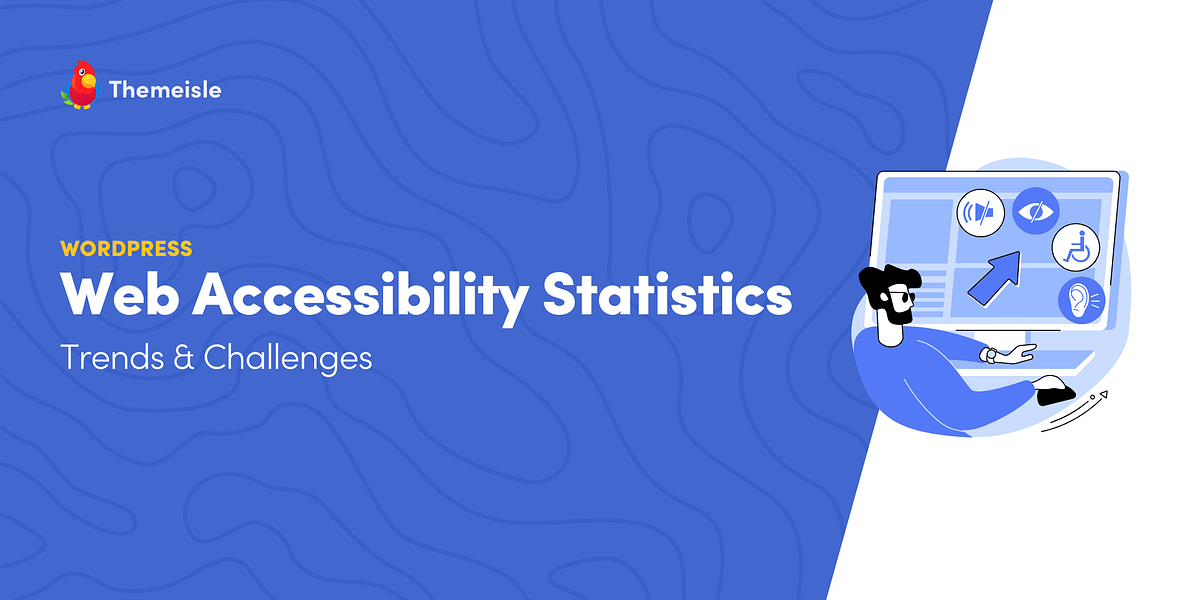
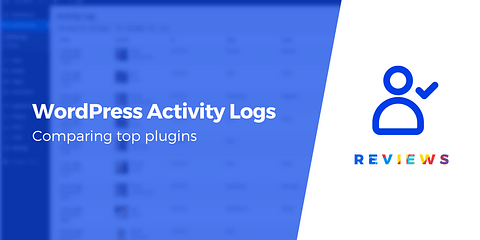








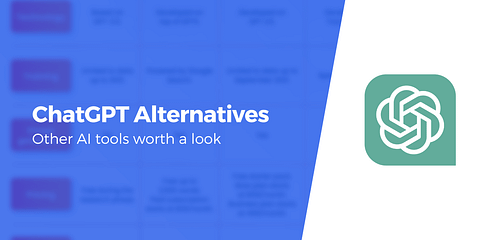


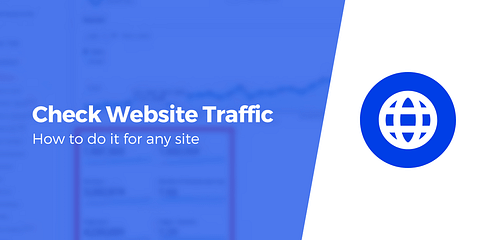
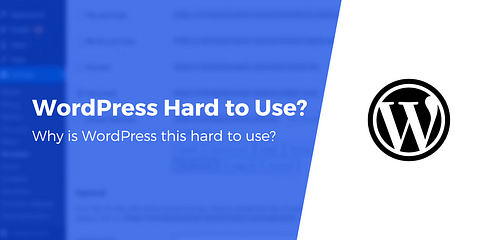
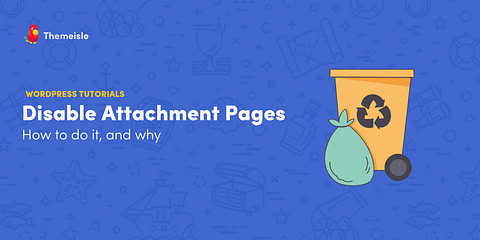

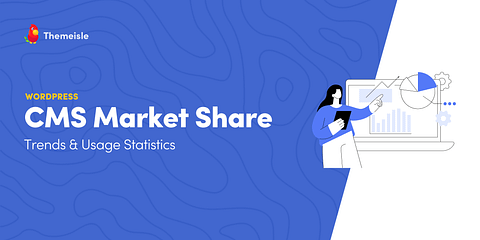

Or start the conversation in our Facebook group for WordPress professionals. Find answers, share tips, and get help from other WordPress experts. Join now (it’s free)!